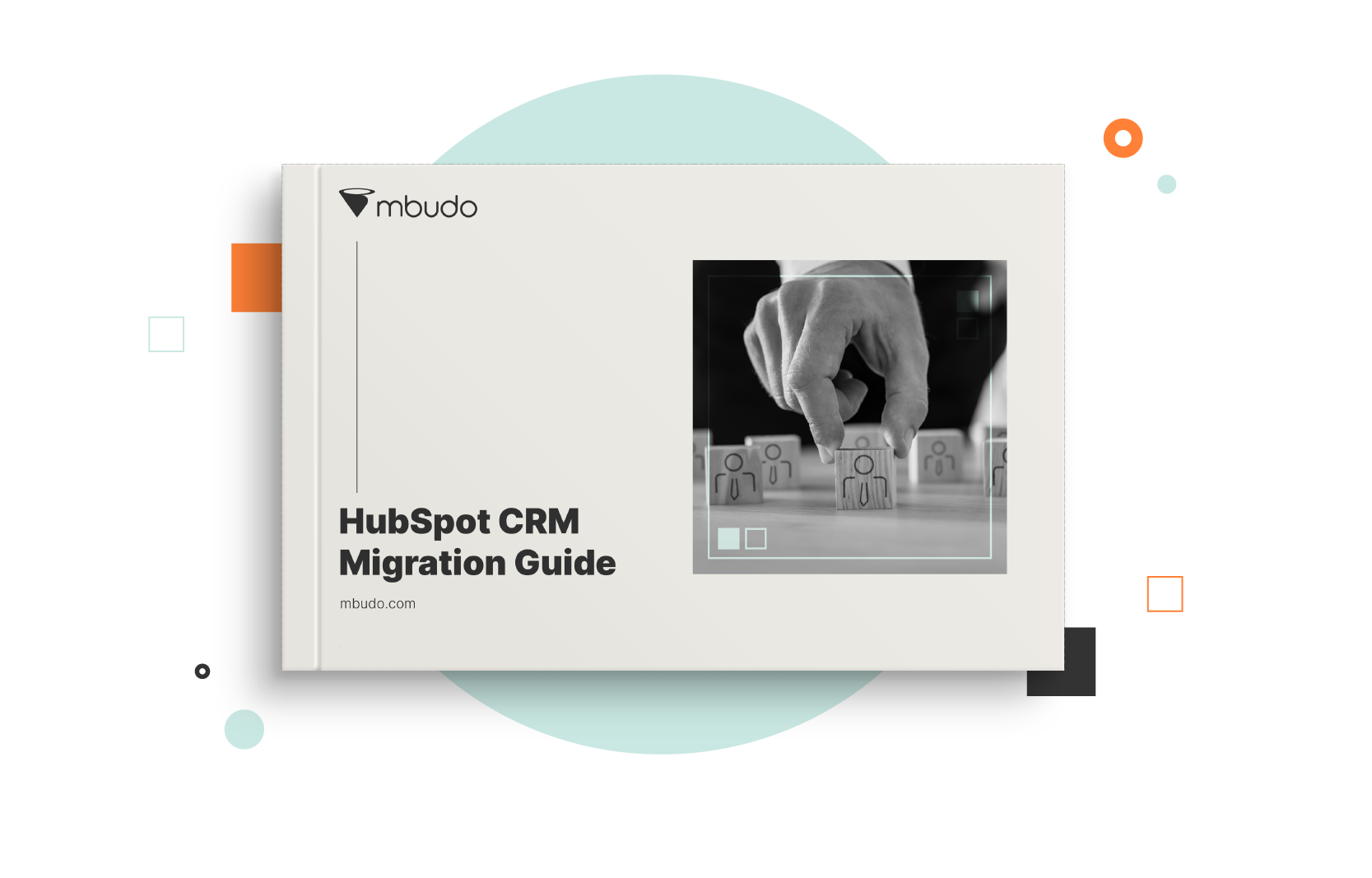
Switching CRMs is usually a complicated, drawn-out process that involves several departments within your company; a CRM is important not only for your Sales department - Marketing, Administration, and Operations most likely have a lot of valuable information stored there, too. With so many players involved, it is normal to want to take extra care when embarking on such a big project, especially when you have doubts or do not know where to even begin.
That's why from mbudo, a HubSpot Partner Agency, we have prepared a simple guide to explain the 5 principal steps to a migration to HubSpot CRM. Following these steps will convert that complex CRM migration into a simple, hassle-free process for your company. What a relief!
1. Make an action plan for your data migration to HubSpot
Like with any other big project, you must create an action plan before starting. You will need to coordinate key players from different departments; questions and challenges will undoubtedly arise in the next stages, and everyone will be required to work together to ensure that the CRM migration goes smoothly.
The characteristics of your former CRM will affect the length and complexity of the project timeline, but the method you choose for data migration will have an equally large impact. There are 3 main ways to migrate your data:
- Import an Excel or CSV file to HubSpot:This is the simplest and cheapest option if you have few objects for import and if these objects do not have many associations with each other. Although this is the simplest approach, it could take several weeks, since it may require several iterations to get all the data correctly formatted in HubSpot. Nevertheless, if we start with a well-optimized database and the data to be migrated is not too complex, this option would be the most suitable for your company.
- Use the HubSpot API: If you have a developer on your team or someone with experience working with APIs, this method can be faster and more easily automated than the previous option. If you do not have a tech team to rely on, a HubSpot partner like mbudo can provide the necessary support.
- Consider an importation software: There are applications that can achieve good results in a short period of time, once you have your priorities clear and our old CRM organized and optimized. These solutions are very robust, and we recommend them if there is a tight timeframe and enough margin in the budget for a small extra expense.
2.Optimize your current database
A database is only as valuable as the quality of the data it contains. It would be wrong to assume that years and years of disorganized information can be magically organized and cleaned by a migration to HubSpot or any new CRM. It is better to spend time homogenizing your data and looking at the small details, even if it means delaying the timeline a little bit. Some of the points that should be reviewed in depth when validating a database clean-up include:
- Select and optimize the fields that are needed in the new system.
- Complete missing and relevant information, such as email addresses and names.
- Unify the format and naming of drop-down field values.
- Standardize the format of date fields.
- Check that associations between objects (contacts, deals and companies, for example) make sense and reflect accurate information.
- Remove any obsolete data entries.
3. Prepare your HubSpot platform for migration
In HubSpot, the different fields that provide information about CRM objects are called "properties". Once you know the data that you are going to transfer to HubSpot, your team or partner agency will need to create "custom properties". Before getting started, you should also check that the fields you want to use are not already in HubSpot by default - for example, basic fields such as email or first and last name are already included in HubSpot and you must be careful not to duplicate them.
4. Map the fields of your former CRM to HubSpot properties
Once you have the properties created and both sides of the equation are ready (your former CRM and the HubSpot CRM), the next step is to map and associate the property values. For example, this includes the values found in dropdowns and multiple-choice properties. You must take into even the smallest details, like uppercase and lowercase letters, accents, spaces, punctuations, etc. This mapping table will allow you to control your CRM's structure and will serve as a guide for CRM importation and use.
5. Perform a test migration to HubSpot and validate the data
Before going full speed ahead, it is recommended to perform a sample migration first. This basically means importing a small data section and reviewing the results, so that you can detect formatting errors and unforeseen complications. To be thorough, you should compare the accuracy and associations between the data. Once you have finished all the adjustments, it's time to perform the final import!
If you have followed these steps, you should not encounter any complications when doing your final import. But never say never! Unforeseen events can always occur, so you should maintain access to your previous CRM for a few weeks in case you need to make any corrections or adjustments to the transferred data. What's left? Just enjoying your new HubSpot platform and your clean and organized CRM!
If your company is considering switching CRMs and you need more information about HubSpot, do not hesitate to contact mbudo. Our specialized Inbound Marketing agency is a HubSpot Diamond Partner with lots of experience in CRM migrations and advanced HubSpot integrations. We can be the partner you're looking for!
Ana Botija Loaísa
Ana is COO in mbudo. She has worked with multinational IT and Telco companies in the areas of Engineering, Business Development, and Marketing. Ana doesn't try to deny her past as an engineer, which helps her enjoy the most complicated challenges. She loves art history and travel.
It may interest you
LATEST
BLOG POSTS
SUBSCRIBE TO MBUDO BLOG
And get your inbound news directly in
your inbox, once a month.


